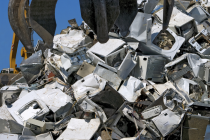How Recalls Work (And Don’t) And Why They’re All So Different
by Kate Cox, Consumerist
 Manufacturers — of all kinds — usually try hard to get it right on the first try. From banana muffins to bicycle helmets, it’s in a company’s best interests to make their products perfect. Not only is it better for their reputation and their business, but it’s less expensive, in the long run, and causes less trouble. Sometimes, though, something just goes wrong.
Manufacturers — of all kinds — usually try hard to get it right on the first try. From banana muffins to bicycle helmets, it’s in a company’s best interests to make their products perfect. Not only is it better for their reputation and their business, but it’s less expensive, in the long run, and causes less trouble. Sometimes, though, something just goes wrong.
A design flaw you don’t notice until it’s in the wild a hundred thousand times. A sensitivity you’d have no way of discovering if you didn’t test on a wide enough array of people. A couple hundred mice in the factory wreaking havoc on the production line. Whatever the cause, crap happens and sometimes products need to be recalled.
So where do recalls come from, and how are they handled? That’s where it gets tricky.
The government maintains a one-stop shop website for listing recalls, but there is no National Bureau of Recalls… as much as it might help consumers if there were. Instead, a patchwork arrangement of four independent agencies is responsible for consumers’ health and safety.
The agencies each cover a different aspect of health and safety — food, cars, medicines, household goods, and so on — and each of the four has a different process for initiating recalls and notifying consumers. Here’s how it all works.
Continue reading on Consumerist »
Tags: Auto Safety, Recalls